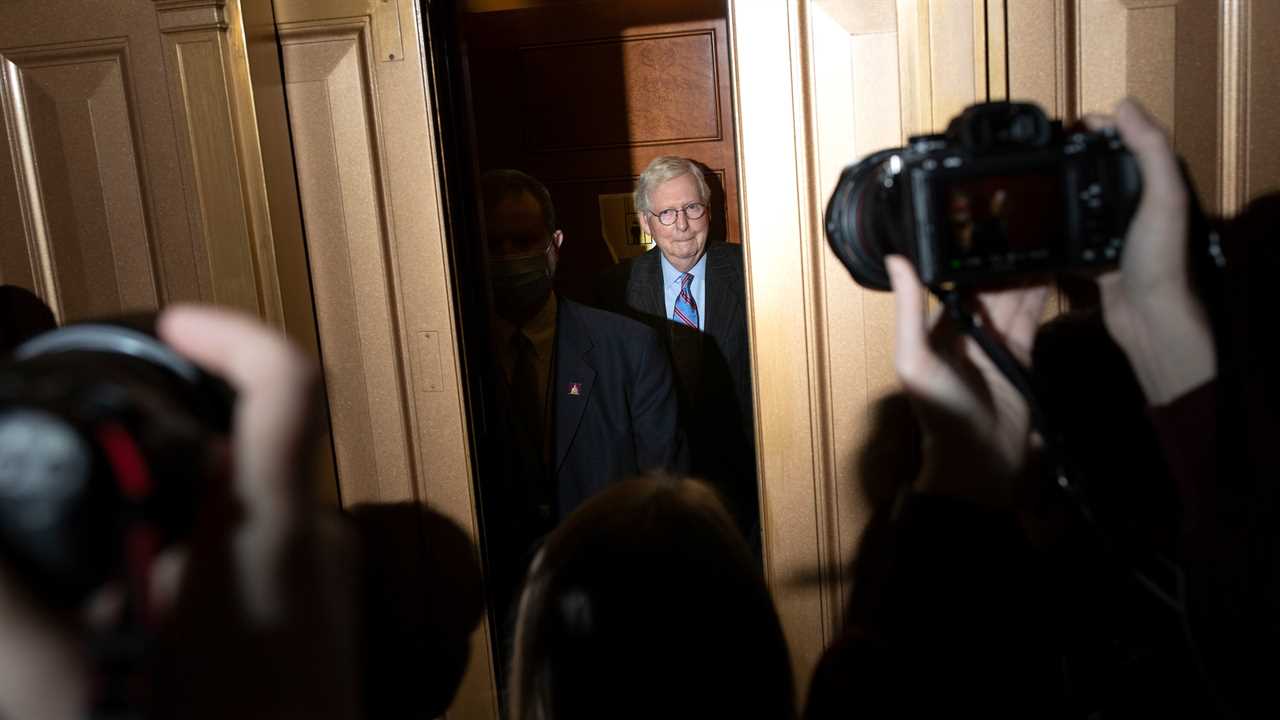
Hours before a failed effort by Democrats to pass a voting rights bill in the Senate, Senator Mitch McConnell of Kentucky was asked in a news conference on Wednesday for his message to voters worried about access to the polls during the midterm elections.
Mr. McConnell described those worries as a ginned-up controversy, and misleadingly cited data on voter turnout.
“Well, the concern is misplaced, because if you look at the statistics, African American voters are voting in just as high a percentage as Americans” he responded.
In a recent survey, 94 percent of Americans thought it was easy to vote,” he continued. “This is not a problem. Turnout is up. Biggest turnout since 1900. It’s simply they’re being sold a bill of goods to support a Democratic effort to federalize elections.”
Mr. McConnell’s remarks were roundly criticized by the Congressional Black Caucus, Democratic lawmakers and others. Some accused the senator of racism in appearing to imply that Black voters are not American.
“After centuries of building this nation, Republicans still don’t consider Black voters to be Americans,” tweeted Representative Ayana S. Pressley, Democrat of Massachusetts. “We cannot pretend that the days of Jim Crow are behind us.”
“Being Black doesn’t make you less of an American, no matter what this craven man thinks,” tweeted Charles Booker, a Kentucky Democrat running to unseat the state’s junior senator, Rand Paul.
Still, Mr. McConnell’s comments raised questions about how turnout for Black voters compared with that of other demographic groups, and what that might say about voting access.
In a statement provided to The New York Times on Thursday, Mr. McConnell sought to clarify his remarks, saying that he has “consistently pointed to the record-high turnout for all voters in the 2020 election, including African Americans.”
A spokesman for Mr. McConnell also cited Census Bureau demographic data on voter turnout for the past four federal elections. In the 2020 election, for example, 62.6 percent of eligible Black Americans voted, compared with 66.8 percent of all eligible Americans, a difference of 4.2 percentage points. In the 2018, 2016 and 2014 elections, the gaps were even smaller, at about 2 percentage points.
So while Black American voter turnout is not “just as high” as overall voter turnout, as Mr. McConnell said, it does seem comparable in several recent elections.
But the disparity is more stark between Black and white voters. According to an analysis of Census Bureau data by Michael McDonald, a voter turnout expert at the University of Florida, Black Americans have almost always voted at lower rates than white Americans. The exceptions were in 2008 and 2012, when Barack Obama was on the ballot. Those were the only years in which Black turnout surpassed white turnout.
The racial voting gap has fluctuated in recent decades. According to Mr. McDonald’s analysis, in the 1988 presidential election, 46.8 percent of eligible Black Americans voted, compared with 55.7 percent of eligible white Americans — a gap of 8.9 percentage points. That gap had shrunk by the 2016 presidential election to 4.8 percentage points, before increasing to 7 percentage points in 2020.
But overall, the 2020 election attracted the highest voter turnout in more than a century. And in a Pew Research Center poll conducted just days after the election, 94 percent of those surveyed said it had been very or somewhat easy to vote, as Mr. McConnell said.
However, high voter turnout and perceptions that voting was easy in past elections do not prove that concerns about voting access in future elections are “misplaced,” as Mr. McConnell suggested. At least 19 states passed laws in 2021 restricting voting access. Georgia’s efforts in particular may have an outsize impact on Black voters.
And the high turnout in 2020 was fueled in part by unusually high voter engagement. In a Pew poll conducted in July and August 2020, 83 percent of respondents said it really matters who wins the presidency, the highest percentage to give that response in the survey’s 20-year history.
“More people were voting in 2020 because more people were interested in voting. That is not a measure of how many were impacted because of voting restrictions,” said Wendy Weiser, the director of the Democracy Program at the Brennan Center for Justice. “It can’t be that we are satisfied with disenfranchising 10 percent of the population because 60 percent of the population showed up.”
Did you miss our previous article...
https://trendinginthenews.com/usa-politics/how-jan-6-gave-the-14th-amendment-new-life






